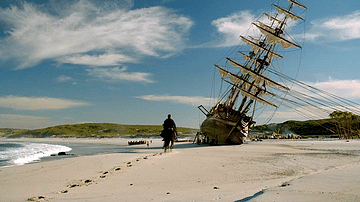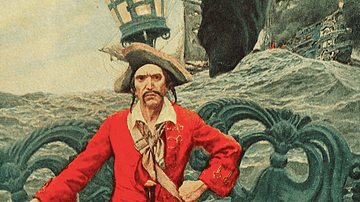Review

| Rating: | |
|---|---|
| Title: | Piracy in World History (Maritime Humanities, 1400-1800) |
| Author: | Stefan Amirell & Hans Hägerdal & Bruce Buchan & Jennifer Gaynor & Robert Antony & Joshua White & Birgit Tremml-Werner & Michael Kempe & Joachim Östlund & Lakshmi Subramanian |
| Audience: | University |
| Difficulty: | Medium |
| Publisher: | Amsterdam University Press |
| Published: | 2021 |
| Pages: | 290 |
This is a collection of insightful essays by historians who connect piracy to world history through examinations of state sovereignty, economics, and philosophy during the rise of empires and the age of European imperialism. It is a useful tool for historians, sociologists, and security specialists interested in maritime affairs.
Stefan Amirell, Bruce Buchan, and Hans Hägerdal have compiled an excellent and informative collection of chapters on piracy in Piracy in World History. With these contributions from many prominent scholars, this work is a worthy companion to C. R. Pennell’s Bandits at Sea (2001) and effectively explores the relationships between piracy – particularly non-European piracy – and sovereignty with all the philosophical, historical, political, and anthropological topics that entails.
This work is most suited to a specialized readership already familiar with piracy as a historical concept and other well-known works on piracy. Any reader should be aware of Marcus Rediker’s Villains of All Nations (2004) and David Cordingly’s Under the Black Flag (1995). Specifically, I would recommend Piracy in World History for a specialized graduate seminar or possibly for an upper-division course specializing in maritime history or colonialism.
The collection is divided into three sections, each focused on a central aspect of piracy in world history. The first section discusses piracy and the role it played in politics as well as in the formation of international law. The second section is centered on piracy during the age of imperial expansion. The final section examines the different perceptions that various peoples had of pirates in their respective regions. Each chapter adds something new and unique to the scholarship.
The collection’s strength also lies in illustrating how the concept of piracy in different regions happened concurrently. Pirates have always been amorphous figures, flitting between the legitimate and illegitimate worlds as privateers, legitimate naval sailors, smugglers, and outright marauders. This collection provides a background of how pirates have been perceived since the ancient world when they were regarded as enemies of all and as the antithesis of civilization. As nation-states began to emerge, maritime powers used pirates in various degrees. Some philosophers praised those pirates who resisted unpopular monarchs while others considered pirates to be tyrants in their own right and antagonists to mankind. Emerging empires used pirates to wage commerce destruction whilst refining their concepts of what piracy actually was. With the rising importance of commerce from the 17th to 19th centuries, pirates became the first truly international criminals. An empire could label rival mariners as pirates and use that label as a tool to discredit its rivals and simultaneously assert control of trade routes and markets connecting not just with European waters but, as empires expanded, to the Indian Ocean and South China Sea.
Piracy in World History also shows pirates as tools of convenience depending on the occasion. As European powers expanded, they sometimes cooperated to suppress piracy but did not scruple to use Indigenous maritime states to hold their European rivals in check. Those Indigenous powers, meanwhile, reacted to foreign encroachments with their own irregular naval warfare. Indian coastal powers relied on privateers for protection because European merchants often used the threat of violence to enforce their trade policies. Barbary corsairs served as an extension of Ottoman authority even after the Ottoman regencies on the Barbary Coast practically became sovereign states. In China, the flailing Qing court, European trading companies, and pirate fleets all played off of each other in the often chaotic waters off the Chinese coast and accessed the black markets that thrived as open secrets.
This book's three editors are all experienced scholars, with Amirell and Hägerdal serving as Professors of History at Linnaeus University and Buchan as Associate Professor at Griffith University. Throughout Piracy in World History, some authors allude to present-day issues with pirates off the Horn of Africa and Southeast Asia. History can be used to help us contextualize modern problems and to understand the scope of challenges that face us. In that regard, this work excels because pirates, then just as now, are seldom full-time marauders. Instead, pirates are often created through a mixture of opportunity and disruption.
About the Reviewer
Cite This Work
APA Style
Abbey, I. (2023, October 10). Piracy in World History. World History Encyclopedia. Retrieved from https://www.worldhistory.org/review/383/piracy-in-world-history/
Chicago Style
Abbey, Ian. "Piracy in World History." World History Encyclopedia. Last modified October 10, 2023. https://www.worldhistory.org/review/383/piracy-in-world-history/.
MLA Style
Abbey, Ian. "Piracy in World History." World History Encyclopedia. World History Encyclopedia, 10 Oct 2023. Web. 02 May 2024.



